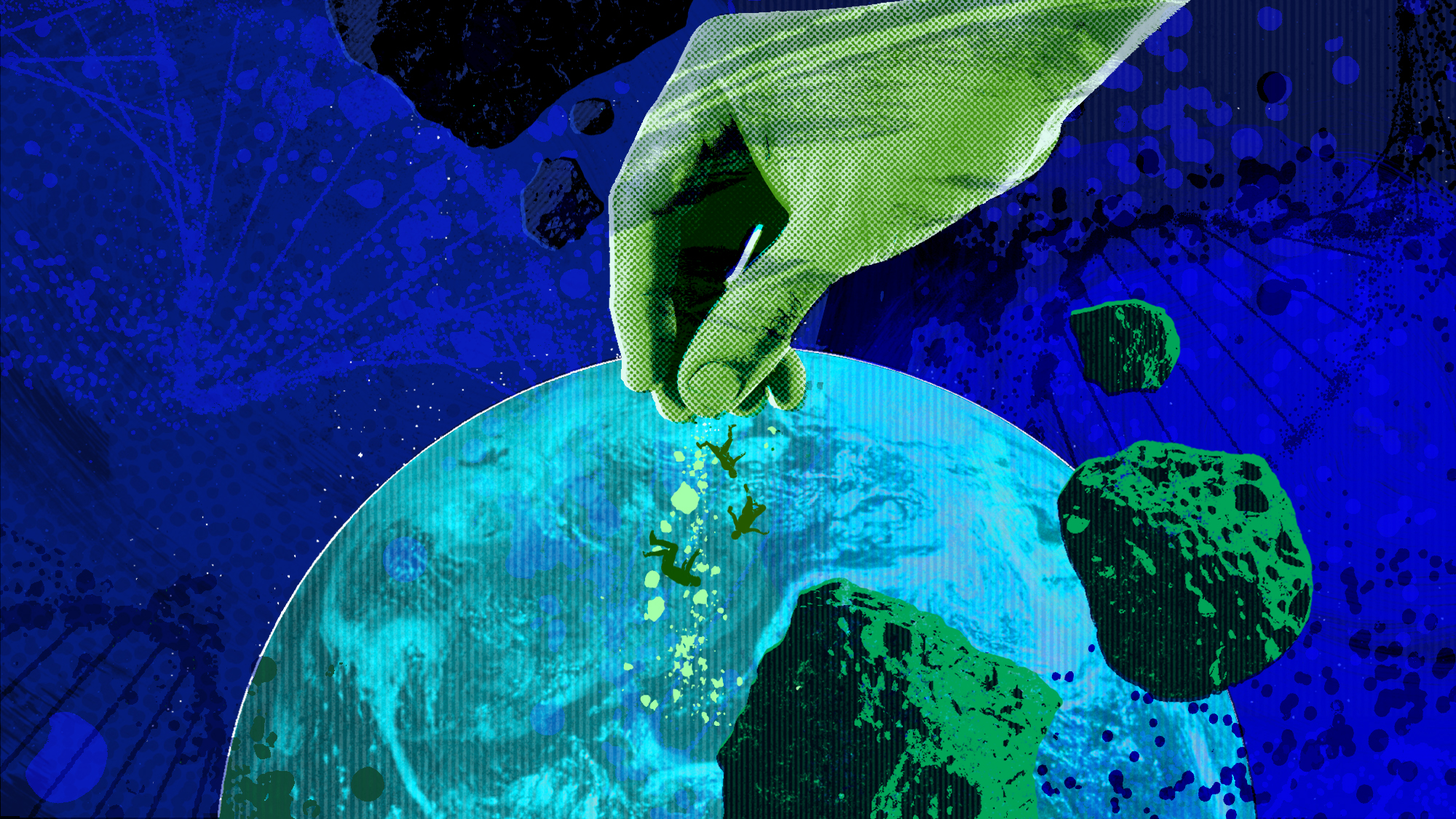Mars may have been habitable more recently than thought
A lot can happen in 200 million years


Mars may have hosted life billions of years ago, a possibility that has long intrigued scientists. Now, new evidence suggests the planet was habitable for even longer than previously thought, due to the presence of a global magnetic field. These findings change what was once believed about the history of Mars and could help uncover more about the planet and our solar system at large.
Disappearing dynamo
Like the Earth, Mars had a magnetic field surrounding it — the "dynamo." Mars' dynamo was "driven by convection within the planet's iron core much like Earth's," and "could shield the surface from harmful cosmic rays, crucial for maintaining a habitable environment," said Earth.com. While the Mars of today is dry and barren, it may have once been full of life before the dynamo vanished. A recent study published in the journal Nature Communications suggests that Mars' magnetic field may have been around longer than scientists were aware of, only disappearing approximately 3.9 billion years ago, compared to the previous estimates of 4.1 billion years.
Researchers formerly suspected that the dynamo was gone 4.1 billion years ago because "huge impact basins that were formed during a period of bombardment between 4.1 and 3.7 billion years ago do not retain any record of strong magnetism in their rock," said Space.com. They concluded that the craters only formed when there were no other strong magnetic fields present. However, the new study argues that those craters "formed while the dynamo of Mars was experiencing a polarity reversal — north and south poles switching places — which, through computer simulation, can explain why these large impact basins only have weak magnetic signals today," said The Harvard Gazette.
The Week
Escape your echo chamber. Get the facts behind the news, plus analysis from multiple perspectives.

Sign up for The Week's Free Newsletters
From our morning news briefing to a weekly Good News Newsletter, get the best of The Week delivered directly to your inbox.
From our morning news briefing to a weekly Good News Newsletter, get the best of The Week delivered directly to your inbox.
The search for the Martian
These findings are significant because 200 million years is a lot of time for life to potentially develop. The dynamo's extended timeline "overlaps into the era when the surface of the Red Planet became covered in water, evidence for which has been discovered by NASA Mars rovers," said Space.com. "With the magnetic field still in place to shield the surface, life may have had a chance to get started in a watery environment without being killed off by radiation from space."
Scientists have been actively looking into finding evidence of life on Mars. For example, a Caltech study found a potential habitable zone for underground microbes on Mars. The area would be "beneath a certain amount of ice," said New Atlas: "Too shallow and the strong ultraviolet radiation will cook them, but too deep and there won't be enough visible light filtering down for them to feed on." Bringing in this new data on the dynamo could provide insight into habitable zones as well.
"We are trying to answer primary, important questions about how everything got to be like it is, even why the entire solar system is the way that it is," said Sarah Steele, a student at the Harvard Kenneth C. Griffin Graduate School of Arts and Sciences and a lead author of the study, in a statement. "Planetary magnetic fields are our best probe to answer a lot of those questions, and one of the only ways we have to learn about the deep interiors and early histories of planets."
A free daily email with the biggest news stories of the day – and the best features from TheWeek.com
Devika Rao has worked as a staff writer at The Week since 2022, covering science, the environment, climate and business. She previously worked as a policy associate for a nonprofit organization advocating for environmental action from a business perspective.
-
 Could smaller cars bring down vehicle prices?
Could smaller cars bring down vehicle prices?Today’s Big Question Trump seems to think so, but experts aren’t so sure
-
 2025’s most notable new albums
2025’s most notable new albumsThe Week Recommends These were some of the finest releases of the past year
-
 Trump aims to take down ‘global mothership’ of climate science
Trump aims to take down ‘global mothership’ of climate scienceIN THE SPOTLIGHT By moving to dismantle Colorado’s National Center for Atmospheric Research, the White House says it is targeting ‘climate alarmism’
-
 Blue Origin launches Mars probes in NASA debut
Blue Origin launches Mars probes in NASA debutSpeed Read The New Glenn rocket is carrying small twin spacecraft toward Mars as part of NASA’s Escapade mission
-
 ‘The Big Crunch’: why science is divided over the future of the universe
‘The Big Crunch’: why science is divided over the future of the universeThe Explainer New study upends the prevailing theory about dark matter and says it is weakening
-
 The moon is rusting
The moon is rustingUnder the radar The Earth is likely to blame
-
 Panspermia: the theory that life was sent to Earth by aliens
Panspermia: the theory that life was sent to Earth by aliensUnder The Radar New findings have resurfaced an old, controversial idea
-
 Africa could become the next frontier for space programs
Africa could become the next frontier for space programsThe Explainer China and the US are both working on space applications for Africa
-
 NASA reveals ‘clearest sign of life’ on Mars yet
NASA reveals ‘clearest sign of life’ on Mars yetSpeed Read The evidence came in the form of a rock sample collected on the planet
-
 Canyons under the Antarctic have deep impacts
Canyons under the Antarctic have deep impactsUnder the radar Submarine canyons could be affecting the climate more than previously thought
-
 Atoms into gold: alchemy's modern resurgence
Atoms into gold: alchemy's modern resurgenceUnder the radar The practice of alchemy has been attempted for thousands of years
